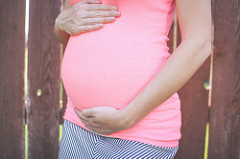In humans, male fetuses are more susceptible to unfavorable conditions than female fetuses. Past studies show that female fetuses are more likely to survive the pregnancy when their mothers are in poor health than males. Male fetus survival rates are more dependent on the nutrients given to the fetus than female fetus survival rates. This explains why more female infants are born during famine than male infants.
Associate professor Kristen Navara at the University of Georgia explores how the effect of weight gain during pregnancy compares between male fetuses and female fetuses. Her findings suggest that weight gain during pregnancy can be remarkably important for the health male fetuses. If women don’t gain enough weight during pregnancy, males fetuses are less likely to survive than female fetuses as males are more resource-dependent.
Image Source: Tim Hale
Navara found that in women who gained less than 20 pounds during their pregnancy, the ratio of female to male babies born was 52:48, a skew that shows females are more likely than males to survive pregnancies in which the mother does not gain enough weight. She indicated that this might be because males require more energy and nutrients in their first few weeks in the womb and are less likely to survive in poor conditions.
This correlation was shown to be quite strong, as Navara commented, “The correlation was a near perfect relationship where the proportion of males rose with the number of pounds women gained during gestation. To me, that tight of a relationship indicates that weight gain and the sex ratio at birth are, in fact, directly related and that the relationship isn’t driven by another related variable.”
Although female and male fetuses grow at different rates, recommendations for weight gain remain the same for all pregnant women, regardless of the sex of the fetus. Navara’s research could suggest that these recommendations be changed so that women carrying male fetuses will be encouraged to gain more weight in order to ensure survival of the fetus.
Feature Image Source: 24 weeks by Sara Neff










